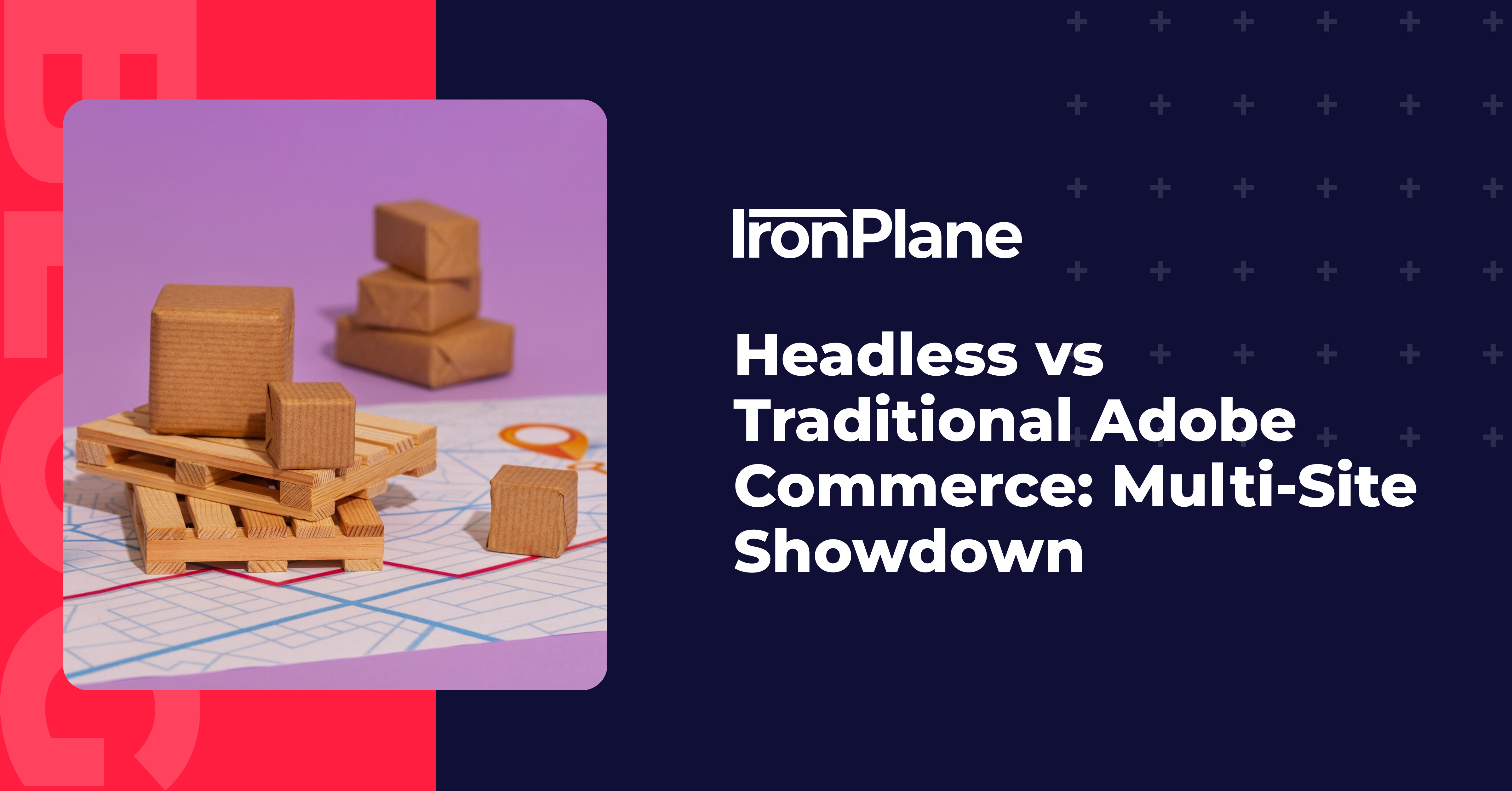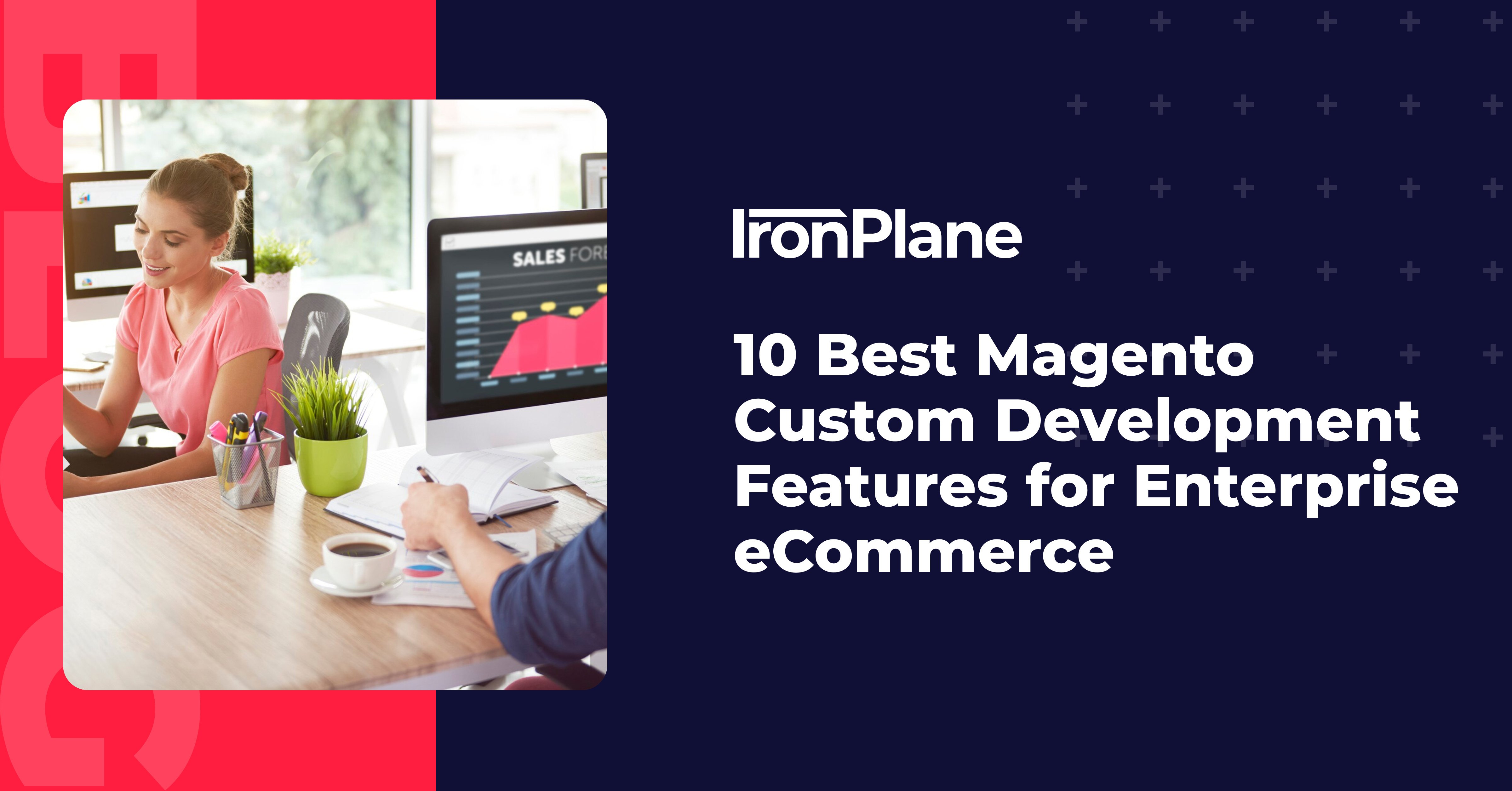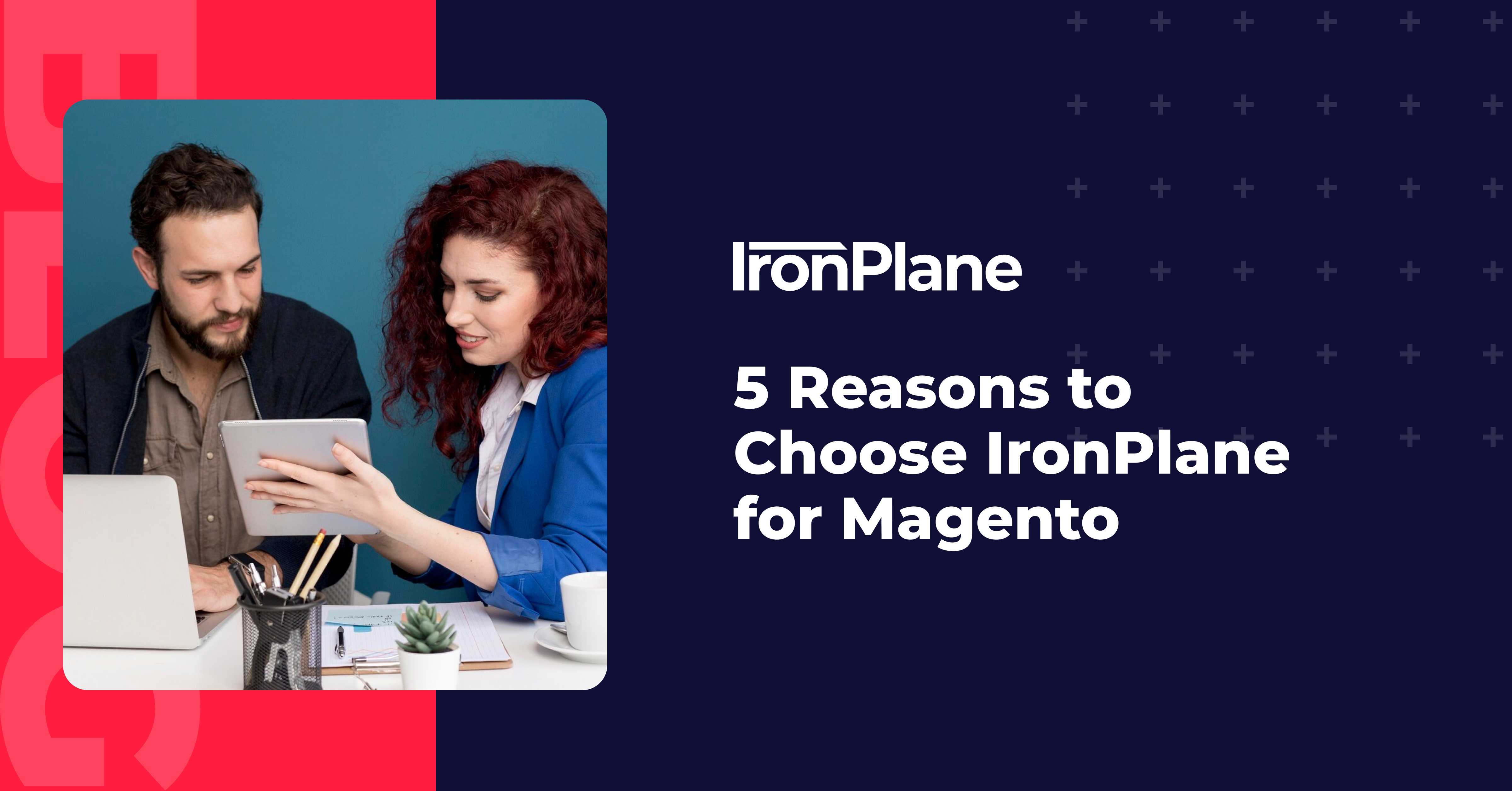10 Best Magento Custom Development Features for Enterprise eCommerce
Magento is a powerful platform for enterprise eCommerce. With custom development, it can improve your online business.

Choosing the right e-commerce architecture is important for businesses that want to stay competitive and give customers a great shopping experience. Let's compare headless and traditional Adobe Commerce architectures for multi-site setups, looking at their strengths, challenges, and how they might affect your business.
Headless commerce is like splitting a store into two parts: the part customers see and use (frontend) and the part that does all the behind-the-scenes work (backend). This setup allows businesses to be more creative with how they show their products to customers on different devices and platforms. By separating the frontend from the backend, companies can create unique experiences without being limited by a single system.
Headless commerce uses special connectors called APIs to help the frontend and backend talk to each other. This separation lets developers change the customer-facing part without messing up the core e-commerce functions. For example, a business could easily add a new mobile app or voice shopping feature without having to change their entire e-commerce system. This flexibility is really useful in today's fast-changing digital world, where new technologies and customer preferences are always popping up.
Traditional Adobe Commerce, which used to be called Magento, is like a complete package for e-commerce businesses. In this setup, everything from the user interface to order processing and inventory management is all connected in one system. This can be good for smaller businesses or those with simple e-commerce needs, as it provides everything in one package. But for bigger companies or those with complex, multi-site needs, the all-in-one nature of traditional Adobe Commerce can sometimes be limiting when it comes to customization and growth.
Adobe Commerce comes with lots of features already built-in, which can be great for businesses that want to start quickly or don't have a lot of developers. These features include things like managing product catalogs, processing orders, handling customer accounts, and marketing tools. However, when it comes to making big changes or adding new, innovative features that weren't originally part of the system, it can be more challenging and time-consuming compared to a headless setup. Any changes to the system often need careful thinking about how they might affect other connected parts.
When it comes to speed, headless commerce often works better than traditional setups. By separating the frontend and backend, data can be delivered more efficiently and pages can load faster. This speed boost is really important in today's competitive e-commerce world, where a good user experience can make or break a sale. Studies show that if a page takes just one second longer to load, 7% fewer people will buy something. Even worse, if a page takes more than 3 seconds to load, 40% of visitors will leave the site, which could mean a lot of lost sales.
Traditional Adobe Commerce can still be fast, especially when it's set up well. But as an online store gets bigger and more complex, keeping it fast becomes harder. This is especially true for sites with lots of products, multiple stores, or lots of visitors. With headless architecture, it's easier to make the frontend faster without messing up the backend systems. For example, developers can use modern frontend technologies like React or Vue.js to create super-fast user interfaces while the backend handles all the data processing separately. This separation allows for more targeted improvements and can make the overall site much faster and more responsive.
| Service | Description | Expertise Level |
|---|---|---|
| Adobe Commerce Development | Custom ecommerce solutions using Adobe Commerce platform | Expert |
| Magento 1 to 2 Migration | Upgrade from Magento 1 to Adobe Commerce (Magento 2) | Expert |
| Performance Optimization | Improve website speed and user experience | Expert |
| Security Services | Enhance ecommerce site security and protect customer data | Advanced |
| Support & Maintenance | Ongoing technical support and updates for Adobe Commerce sites | Advanced |
Headless commerce really shines when it comes to flexibility and customization options. This approach lets businesses create unique shopping experiences across many different devices and platforms. For example, a company could easily make a custom mobile app, add voice shopping through smart speakers, or create cool augmented reality (AR) experiences to show off products - all while using the same backend e-commerce system. This flexibility is really valuable today, where customers expect smooth experiences across many different touchpoints.
Traditional Adobe Commerce offers customization options too, but they might be more limited compared to headless solutions. While Adobe Commerce comes with lots of features and the ability to add more through modules and plugins, making big changes to the core user experience or adding cutting-edge technologies can be harder and take longer. Comparing Adobe Commerce versions can help you understand the differences in flexibility between the free and paid versions. For businesses with standard e-commerce needs, the traditional setup might provide enough customization options. But for those wanting to push the boundaries of online shopping and create truly unique customer experiences, a headless approach often gives more freedom and ability to change quickly.
Building and maintaining a headless commerce system can be more complicated at first, needing a team of developers who know both frontend and backend technologies. This approach often involves working with multiple programming languages and frameworks, which can make the initial development take longer and cost more. However, once the system is set up, making changes or adding new features can be much faster and easier. For example, updating how the site looks or adding a new way to sell products can be done without touching the core e-commerce functionality, which reduces the risk of causing problems and makes the development process smoother.
Traditional Adobe Commerce might be simpler to start with, especially for smaller businesses or those without a lot of technical resources. The platform comes with a comprehensive set of tools and features ready to use, which can speed up the initial setup process. However, as your store grows and needs more complex customizations or integrations, updates and changes might take longer and be more challenging. This is where working with an experienced Adobe Commerce development partner becomes especially valuable—they can ensure that new features, extensions, or upgrades are implemented cleanly, without disrupting core systems. Also, upgrading to new versions of Adobe Commerce can be a big task, especially if the store has a lot of custom features.
Improving your store's search function is a good example of something that might be easier in a headless setup. In a headless architecture, you could add a powerful third-party search solution and integrate it smoothly with your frontend, without having to change the core e-commerce platform. This flexibility allows for more advanced features like personalized search results, detailed filtering options, or even AI-powered recommendations, which can greatly improve the user experience and potentially increase sales.
Headless commerce is really good for businesses that want to sell through many different channels, giving unmatched flexibility for engaging customers across various platforms. With a headless setup, you can easily create and manage consistent shopping experiences across websites, mobile apps, social media, IoT devices, and even new technologies like virtual or augmented reality. This approach lets you quickly add new sales channels without having to recreate the entire e-commerce system for each platform. For example, a store could quickly start selling through Instagram, add voice shopping, or create a unique digital kiosk experience in their physical store - all powered by the same backend system.
Traditional Adobe Commerce can handle multiple channels too, but it might need extra add-ons, integrations, or custom development to achieve the same level of flexibility as a headless system. While Adobe Commerce does offer built-in features for managing multiple stores and views, creating truly unique experiences for each channel can be more challenging and time-consuming. The tightly connected nature of the frontend and backend in traditional architecture means that adapting the user interface for different devices or platforms often requires more extensive changes. However, for businesses with simpler multi-channel needs, such as managing multiple websites or a mix of online and in-store sales, traditional Adobe Commerce can still provide a solid foundation.
Setting up a headless commerce system can cost more at first, mainly because you need specialized developers and possibly more complex infrastructure. You might need to hire skilled developers who know both frontend technologies (like React, Vue.js, or Angular) and backend systems. There may also be costs for connecting various services and APIs to create a complete e-commerce solution. However, over time, this approach can lead to big cost savings. The modular nature of headless architecture makes it easier to update and add new features, potentially reducing long-term development and maintenance costs. Plus, the improved performance and flexibility of headless systems can lead to more sales and happier customers, which could make up for the initial investment.
Traditional Adobe Commerce might have lower upfront costs, especially for businesses that can use the platform's ready-made features without a lot of customization. The all-in-one nature of Adobe Commerce means that many essential e-commerce functions are already included, potentially reducing initial development time and costs. However, as your store grows and needs more advanced features or customizations, costs can increase quickly. Upgrading to new versions of Adobe Commerce, adding complex integrations, or creating custom modules can take a lot of time and money, especially if you need to hire specialized Magento developers.
Comparing total ownership costs between different platforms can help you make the best choice for your budget. When doing this analysis, it's important to consider not just the initial setup costs, but also ongoing expenses like hosting, maintenance, upgrades, and potential revenue gains from improved performance and flexibility. For example, while a headless solution might cost more upfront, the potential for easier scaling, faster addition of new features, and improved sales rates could result in a better return on investment over time.
Both headless and traditional Adobe Commerce architectures take security seriously, but they handle it differently. In headless systems, separating the frontend and backend can add an extra layer of security. By keeping the customer-facing part separate from the core e-commerce functionality, it's harder for potential attackers to access sensitive data or critical systems. This separation also allows for more detailed security controls, as different parts of the system can be secured independently. Additionally, headless architectures often use modern cloud-based services and microservices, which can benefit from the strong security measures implemented by major cloud providers.
Traditional Adobe Commerce has a good reputation for security, with built-in features designed to protect against common e-commerce vulnerabilities. The platform regularly releases security updates to address potential threats. For businesses that prefer an all-in-one solution with established security protocols, traditional Adobe Commerce can be a good option. However, it's worth noting that the interconnected nature of a monolithic system means that vulnerabilities in one area could potentially affect the entire platform.
Regardless of which architecture you choose, it's crucial to implement and maintain strong security practices. This includes regular security checks, keeping all systems up-to-date, implementing strong authentication methods, and following e-commerce security best practices. Both headless and traditional systems must also comply with relevant data protection regulations such as GDPR or PCI DSS, which may require additional considerations in terms of how data is stored, processed, and transmitted.
Headless commerce is often compared to building with Lego blocks, offering great flexibility and scalability for future growth. This modular approach allows businesses to easily add new technologies, expand to new markets, or adapt to changing consumer behaviors without having to rebuild their entire e-commerce system. For example, if a new social media platform becomes a popular place to sell products, a headless system can quickly adapt to include this new sales channel without affecting the core backend operations. Similarly, adding cutting-edge features like augmented reality product previews or AI-powered personalization can be done more easily in a headless architecture.
Traditional Adobe Commerce can also grow and adapt to future needs, but the process might be more challenging and time-consuming. While Adobe Commerce regularly updates its platform with new features and capabilities, making major changes or adopting new technologies often requires more extensive modifications to the existing system. This can be particularly challenging for businesses with heavily customized Adobe Commerce installations, as updates and new feature implementations may require significant development work to ensure everything works well with existing customizations.
Progressive Web Apps (PWAs) are a good example of new technology that can be more easily implemented with a headless system. PWAs offer app-like experiences through web browsers, combining the best of both web and mobile applications. While Adobe Commerce does offer PWA Studio for developing progressive web applications, implementing a PWA on a headless architecture often provides more flexibility and can result in better performance. This is because headless systems allow developers to use their preferred frontend technologies and frameworks, potentially leading to more optimized and innovative user experiences.
Picking between headless and traditional Adobe Commerce architectures is an important decision that can greatly impact your business's online success. The choice depends on your specific business needs, resources, and long-term goals. If your business values flexibility, plans to sell through many different channels, and has the budget and technical know-how for a more complex setup, headless commerce might be the best solution. It offers unmatched adaptability, letting you create unique customer experiences across various platforms and easily integrate new technologies.
On the other hand, if you're just starting out in e-commerce, have simpler needs, or prefer an all-in-one solution that's less complex to begin with, traditional Adobe Commerce could be a better fit. It provides a comprehensive set of features ready to use and can be an excellent choice for businesses that want to launch quickly and don't expect to need extensive customizations in the near future.
Remember, there's no one perfect answer for everyone in e-commerce. It's important to carefully consider your current needs, future plans, available resources, and technical capabilities. Think about factors like your target market, growth plans, desired customer experiences, and integration requirements. It might be helpful to talk to e-commerce experts or solution providers who can offer insights based on your specific situation and help you make an informed decision.
No matter which option you choose, the main goal is to create a great shopping experience for your customers. With the right architecture in place, you can build an online store that's not only fast and easy to use but also flexible enough to adapt to the always-changing world of digital commerce. Whether you go for the flexible, modular approach of headless commerce or the integrated approach of traditional Adobe Commerce, the key is to align your choice with your business strategy and what your customers expect. By doing this, you'll be in a good position to succeed in the competitive world of e-commerce, ready to meet current demands and adapt to future challenges.

Magento is a powerful platform for enterprise eCommerce. With custom development, it can improve your online business.

If you're looking for a good Magento development partner, IronPlane is a great option. They've been working with Magento for over 12 years and have become experts in eCommerce solutions.
.png)
Compare top Adobe Commerce partners and find the right agency for your site's needs. Learn about IronPlane's expertise and schedule a consultation.